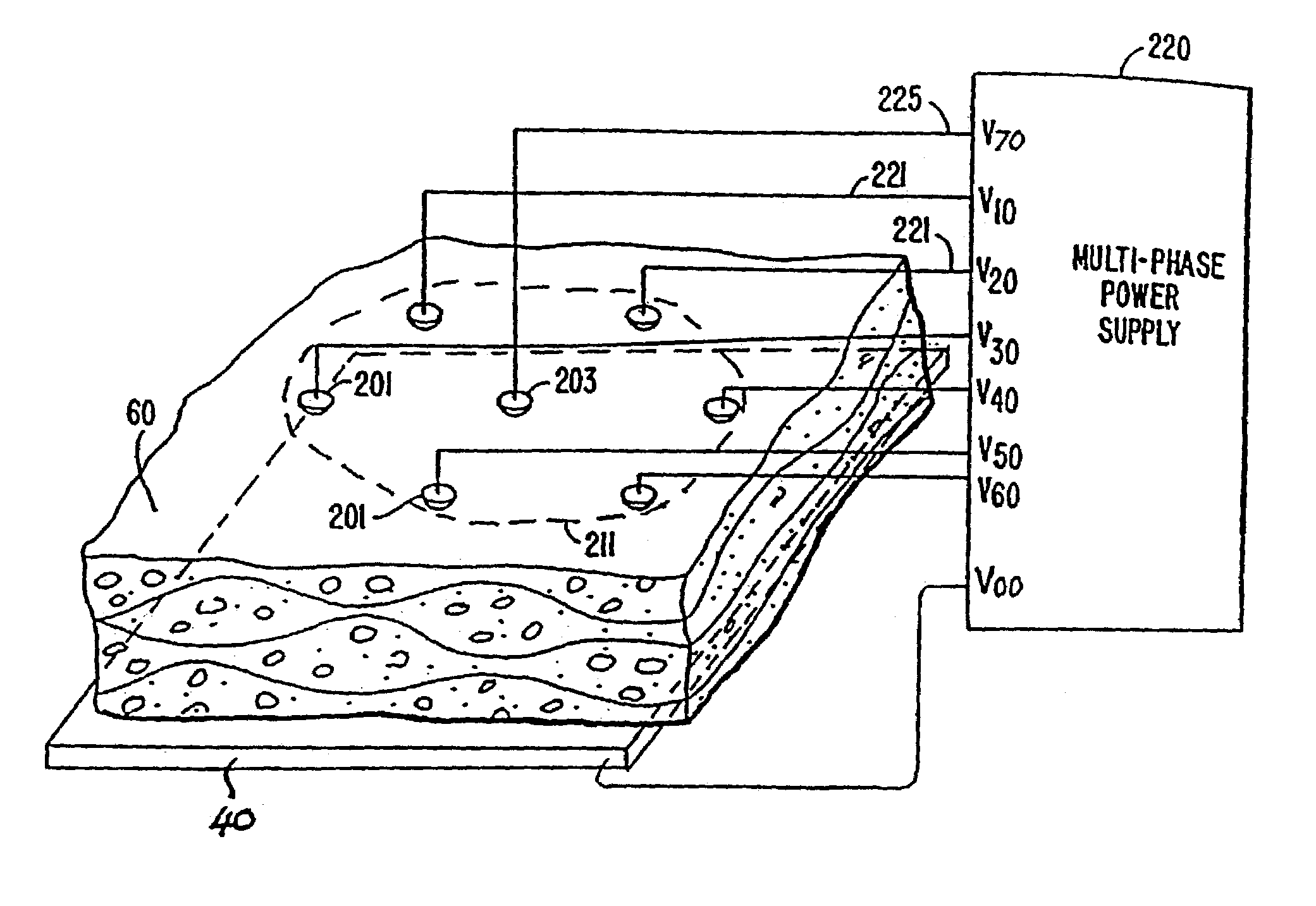Device and method for multi-phase radio-frequency ablation
- Summary
- Abstract
- Description
- Claims
- Application Information
AI Technical Summary
Benefits of technology
Problems solved by technology
Method used
Image
Examples
Embodiment Construction
[0060]FIG. 1a illustrates the conventional technique of single-phase radio-frequency (SPRF) ablation employing a standard electrode catheter 10. An electrode 20 is located at the tip of the catheter and is electrically connected to a single-phase RF energy source or power supply 30. The other end of the power supply 30 is connected to a backplate 40. The electrode 20 is typically hemispheric in shape with a diameter of not more than 0.3 mm so as to allow easy insertion into a patient's body. During operations, the electrode 20 is placed adjacent a region to be ablated such as biological tissues 50 inside a heart (endomyocardium). A closed circuit is formed with the backplate 40 in contact with an external body part near the heart of the patient. RF current spreads perpendicularly from the electrode catheter 20 to the backplate 40 creating a lesion on the endomyocardium 50.
[0061]FIG. 1b illustrates in more detail the ablation region shown in FIG. 1a. Since the RF current density is h...
PUM
 Login to View More
Login to View More Abstract
Description
Claims
Application Information
 Login to View More
Login to View More - R&D
- Intellectual Property
- Life Sciences
- Materials
- Tech Scout
- Unparalleled Data Quality
- Higher Quality Content
- 60% Fewer Hallucinations
Browse by: Latest US Patents, China's latest patents, Technical Efficacy Thesaurus, Application Domain, Technology Topic, Popular Technical Reports.
© 2025 PatSnap. All rights reserved.Legal|Privacy policy|Modern Slavery Act Transparency Statement|Sitemap|About US| Contact US: help@patsnap.com



